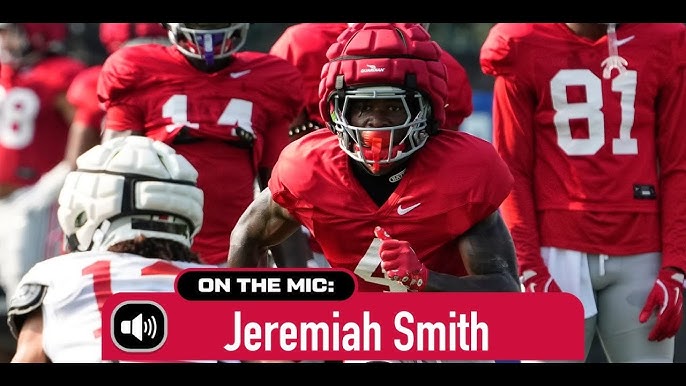## Jeremiah Smith’s Departure from Ohio State: A Deeper Dive
The sudden departure of highly touted wide receiver Jeremiah Smith from the Ohio State Buckeyes program sent shockwaves through the college football world. While the official statement cited a contract termination, the reasons behind his decision are far more nuanced and warrant a deeper exploration beyond the terse press release. Understanding the complexities of this situation requires examining several factors: Smith’s personal aspirations, the competitive dynamics within the Ohio State receiving corps, coaching strategies, and the overall pressures faced by young athletes in the high-stakes environment of college football.
Smith’s arrival at Ohio State was highly anticipated. Considered one of the top wide receiver recruits in the nation, he carried immense expectations. These expectations, however, can be a double-edged sword. The pressure to perform immediately, to live up to the hype surrounding his recruitment, can be overwhelming for even the most seasoned athlete. The intense scrutiny from fans, media, and coaching staff can create a stressful environment that impacts performance and mental wellbeing. It’s possible that the weight of these expectations contributed to Smith’s decision to leave.
Another critical factor to consider is the depth and talent within the Ohio State receiving corps. The Buckeyes boast a roster brimming with established stars and emerging talents at the wide receiver position. Competition for playing time is fierce, and even the most highly-ranked recruits need to earn their place on the field. This intense competition, while beneficial for the team’s overall strength, might have contributed to Smith’s feelings of frustration or a lack of opportunity to showcase his skills. He might have felt stifled by the limited playing time, leading to a sense of dissatisfaction and ultimately, a desire to seek a program where he felt he could contribute more significantly.
The coaching staff’s approach also plays a vital role in a player’s decision to stay or leave. While head coach Ryan Day is known for his offensive prowess, individual coaching styles can impact a player’s development and satisfaction. Smith’s perceived lack of playing time might not solely be due to his performance but also to the coaching staff’s strategic decisions, player rotations, or perhaps a specific incompatibility between the player’s strengths and the team’s offensive system. It’s plausible that Smith sought a different coaching environment that better suited his playing style and allowed for a greater level of involvement.
Beyond the on-field aspects, the broader context of the collegiate athletic landscape needs to be acknowledged. The relentless pressure to succeed, the constant media attention, the demands of academic responsibilities, and the ever-present possibility of injury can significantly impact a young athlete’s mental health and overall well-being. It’s important to remember that these are young individuals navigating a complex and highly demanding environment. Smith’s decision could be a reflection of these broader pressures, a recognition of the need to prioritize his mental and emotional health above all else.
The termination of his contract also suggests a potential breakdown in the relationship between Smith and the Ohio State program. While specific details remain undisclosed, it’s conceivable that underlying issues, perhaps related to team rules, disciplinary actions, or disagreements about playing time, led to an irreparable rift. This highlights the inherent complexities of player-coach relationships and the potential for disagreements to escalate to a point of no return.
The future remains uncertain for Jeremiah Smith. He’ll likely explore options within the transfer portal, seeking a program that offers a better fit for his ambitions and playing style. This decision underscores the ever-evolving nature of college football, where player mobility is becoming increasingly common. The transfer portal presents both opportunities and challenges, and Smith will need to carefully assess his options to find a program that can truly support his development as a player and as an individual.
In conclusion, Jeremiah Smith’s departure from Ohio State is a multifaceted event influenced by a combination of factors. The pressure to perform, intense competition within the team, coaching strategies, the overall challenges of collegiate athletics, and potential underlying conflicts all contributed to his decision. While the official statement remains concise, a deeper understanding of the situation reveals the complex interplay of personal aspirations, team dynamics, and the demanding environment of elite-level college football. The story serves as a reminder of the human element within the highly publicized world of collegiate sports and the importance of supporting the mental and emotional well-being of young athletes.

